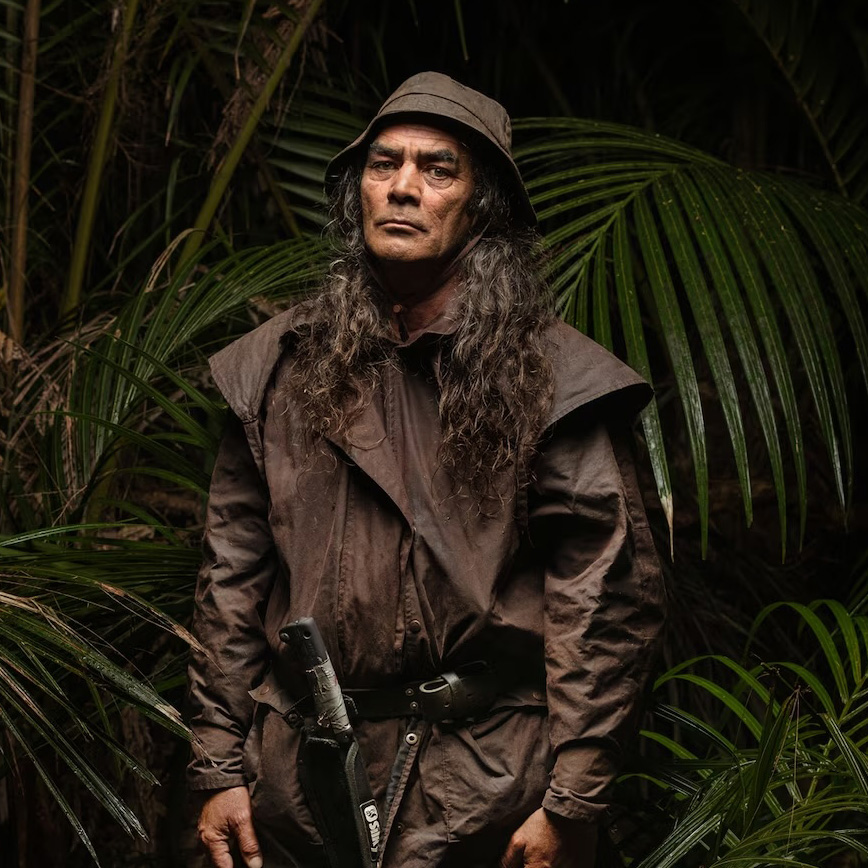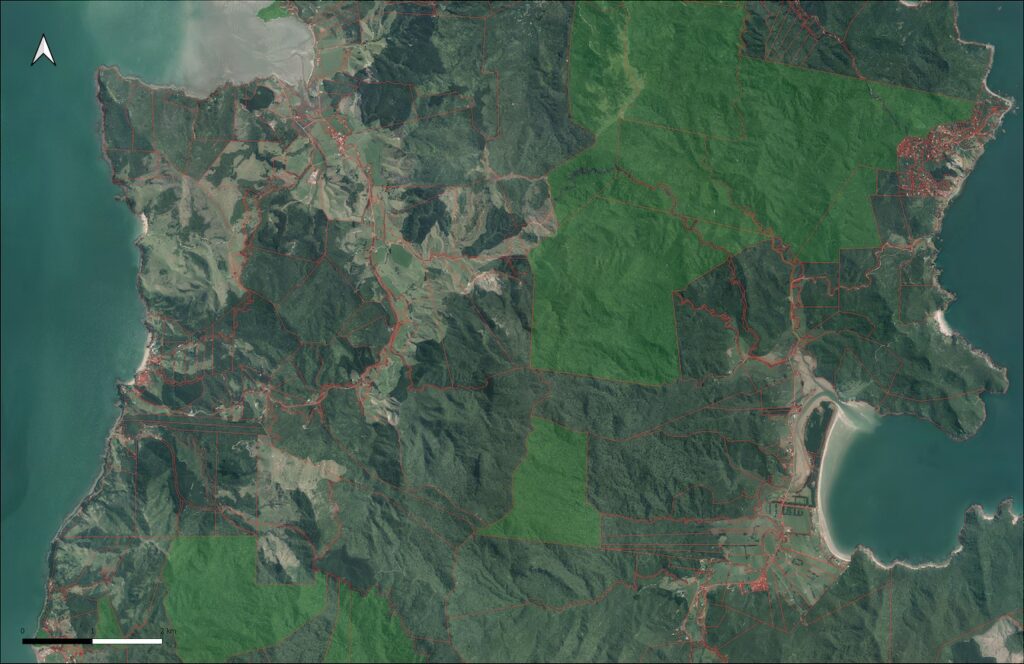A high diversity of wildlife is still found in the area despite the high degree of modification along the coastal lowlands. Extensive forested areas provide habitat for common native birds as well as more notable species such as those listed in Table 1 below.. The long-tailed bat is present and likely to be far more widespread than the current database suggests. Forests would have once been home to thousands of burrowing seabirds such as petrels.
Reptiles, such as the shore skink, moko skink (Oligosoma moco) and egg-laying skink (Oligosoma suteri), are known to occur at shingle beaches. Non-threatened species such as the common gecko (Hoplodactylus maculatus) and forest gecko (Hoplodactylus granulatus) are found in the area, along with the very rare Coromandel striped gecko. Hochstetter’s frog is widespread along the streams, while the upper slopes are a stronghold of Archey’s frog. Estuaries, sand dunes, and beaches provide important habitats for a large number of waders and shorebirds. The few freshwater wetlands around the estuaries provide habitat for the North Island fernbird, spotless crake, Australasian bittern, grey duck, and pateke.
Table 1 Threatened Bird Species recorded in Te Ranga Wairua area (Names and threat status obtained from Miskelly et al., 2008)
| Scientific Name | Common Name | Threat Category |
|---|---|---|
| Anas chlorotis | New Zealand Brown Teal | Recovering |
| Anthus novaeseelandiae novaeseelandiae | New Zealand pipit | Declining |
| Apteryx mantelli | Coromandel brown kiwi | Nationally vulnerable |
| Ardea modesta | White Heron | Nationally critical |
| Botaurus poiciloptilus | Australasian bittern | Nationally endangered |
| Bowdleria punctata vealeae | North Island fernbird | Declining |
| Charadrius obscurus aquilonius | Northern New Zealand dotterel | Nationally vulnerable |
| Cyanoramphus novaezelandiae novaezelandiae | Kākāriki – red-crowned parakeet | Relict |
| Egretta sacra sacra | Reef Heron | Nationally vulnerable |
| Eudyptula minor iredalei | Northern blue penguin | Declining |
| Falco novaeseelandiae | New Zealand falcon | Nationally vulnerable |
| Gallirallus philippensis assimilis | Banded rail | Naturally uncommon |
| Haematopus finschi | South Island pied oystercatcher | Declining |
| Haematopus unicolor | Variable oystercatcher | Recovering |
| Himantopus himantopus leucocephalus | Pied stilt | Declining |
| Hydroprogne caspia | Caspian tern | Nationally vulnerable |
| Larus novaehollandiae scopulinus | Red-billed gull | Nationally vulnerable |
| Nestor meridionalis septentrionalis | North Island kaka | Nationally vulnerable |
| Porzana pusilla affinis | Marsh crake | Relict |
| Porzana tabuensis plumbea | Spotless crake | Relict |
| Sterna striata | White-fronted Term | Declining |
| Phalacrocorax sulcirostris | Little black shag | Naturally uncommon |
| Pterodroma pycrofti | Pycroft’s petrel | Recovering |
A Department of Conservation bird survey (Tier 1 report) in the Te Ranga area in 2019 observed: fantail, Grey Warbler, Kingfisher, Shining Cuckoo Silvereye, Tomtit, Tui, Australasian Harrier, and Bellbird in this plot during the daytime and Kaka and ruru were recorded at night.
Although records of fish species in the project area are limited, we can presume most if not all the species listed in Table 2 below are present in the project area.Table 2 Threatened Fish Species recorded in Thames-Coromandel District (Names and threat status obtained from New Zealand Freshwater Fish Database, NIWA, 2008)
| Scientific name | Common Name | Threat Category |
|---|---|---|
| Anguilla dieffenbachii | Longfin eel | Gradual decline |
| Galaxias postvectis | Shortjaw kokopu | Sparse |
| Galaxias argenteus | Giant kokopu | Gradual decline |
| Geotria australis | Lamprey | Sparse |
| Neochanna diversus | Black mudish | Gradual decline |
| Paranephrops planifrons | Koura | Gradual decline |
As with native fish species, surveys, and data on herpetofauna (lizards and frogs) as well as threatened plants and invertebrates have not been quantified for this area.




